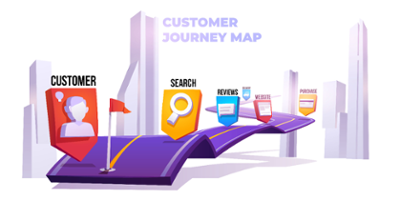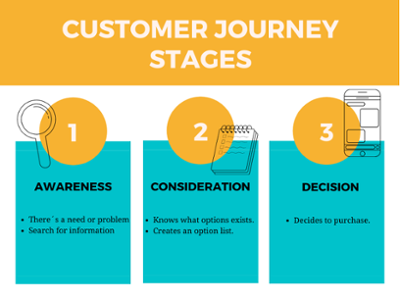Secret Tool for a Better Customer Journey Map: Lean Six Sigma
Do you want to give the customer the best experience in the purchase process, but do not know how? The first step is to understand what you are...
By Role
By Industry
By Target Customer
What We Offer
We drive business growth by improving operational efficiency through process optimization, smart automation, and cost control. Our approach boosts productivity, reduces expenses, and increases profitability with scalable, sustainable solutions
Customer Experience
We design memorable, customer-centered experiences that drive loyalty, enhance support, and optimize every stage of the journey. From maturity frameworks and experience maps to loyalty programs, service design, and feedback analysis, we help brands deeply connect with users and grow sustainably.
Marketing & Sales
We drive marketing and sales strategies that combine technology, creativity, and analytics to accelerate growth. From value proposition design and AI-driven automation to inbound, ABM, and sales enablement strategies, we help businesses attract, convert, and retain customers effectively and profitably.
Pricing & Revenue
We optimize pricing and revenue through data-driven strategies and integrated planning. From profitability modeling and margin analysis to demand management and sales forecasting, we help maximize financial performance and business competitiveness.
Digital Transformation
We accelerate digital transformation by aligning strategy, processes and technology. From operating model definition and intelligent automation to CRM implementation, artificial intelligence and digital channels, we help organizations adapt, scale and lead in changing and competitive environments.
Operational Efficiency
We enhance operational efficiency through process optimization, intelligent automation, and cost control. From cost reduction strategies and process redesign to RPA and value analysis, we help businesses boost productivity, agility, and sustainable profitability.
Customer Experience
Marketing & Sales
Pricing & Revenue
Digital Transformation
Operational Efficiency
In today's highly competitive market, people have a wide variety of brands or entities to turn to when they need a product or service. For a company to stand out from the crowd and build a relationship with its clients, it must offer the possibility of living an entire experience during the process between client and organization. This is where it becomes important to know what the client wants, how he hopes to solve his needs and at what time.
The customer journey is the customer journey, it is the process that a person goes through to acquire a product or service. This covers all phases, from when the customer identifies that he has a need until he makes the purchase that solves his problem, including all the research and considerations involved. The customer journey can be viewed through a “customer journey map”. To find out more, you can read Customer Journey Map: What is it and how to create one?

This model is one of the key pieces for inbound marketing, each interaction that the client has with your company should be tailored to the stage in which they are in the customer journey. This model is one of the key pieces for inbound marketing, each interaction that the customer has with your company should be tailored to the stage at which they are in the customer journey.
Today, the "customer experience" offered by companies must go beyond price and product as brand differentiating factors, especially when we find ourselves in the digital age where people seek efficient processes in the hope of solving their problems. with one click. From the financial sector automating banks with interactive platforms that allow streamlining checkout processes, to the retail sector with clothing stores that allow complementary purchases online; In short, customers are looking for easy and intuitive processes.
Understanding the "buyer personas" of your company and the experience you want to give your customers at each stage to meet their expectations is essential.
The stages of the Customer journey can be summarized in 3 general points:

We have already defined what the customer journey is and what its stages are, but what is the use of implementing this model in our company? Well, the relevance of the customer journey lies in its functions, which are:
To apply the customer journey in your company, it is necessary to have defined some elements:
It is also important to emphasize that when applying the customer journey it crosses the entire company since it is an integral process, and you have to be prepared to find gaps and aspects to improve, be willing to change to optimize the process and use resources to improve the experience the client's.
The objective is first to understand the customer and their current experiences, to create efficient processes and different experiences that attract consumers and make them loyal to the brand.
In conclusion, the customer journey is a model that allows us to monitor customer behavior and the needs that arise along the way until they acquire our product or service, this in order to remain in continuous improvement, adapting to the wishes of clients to build long-lasting, trust-based relationships.
Improving the customer experience through the Customer Journey is not just about optimizing individual interactions; it’s about creating a seamless, cohesive journey that meets expectations and fosters long-term relationships. Every touchpoint matters, from the first engagement to post-purchase support, and businesses that prioritize a structured approach can significantly enhance customer satisfaction and loyalty.
A well-designed Customer Journey allows companies to anticipate customer needs, reduce friction, and deliver personalized experiences that add real value. By continuously analyzing and refining each stage, organizations can identify pain points and implement meaningful improvements. This ongoing commitment to customer experience strengthens brand perception and builds trust, turning one-time buyers into long-term advocates.
By placing the Customer Journey at the core of business strategy, companies not only improve retention but also gain a competitive advantage. Customers gravitate toward brands that make their interactions effortless and enjoyable. A customer-centric approach transforms relationships, driving sustainable growth while ensuring that every interaction reinforces the brand’s value and commitment to excellence.

Do you want to give the customer the best experience in the purchase process, but do not know how? The first step is to understand what you are...

Have you ever thought that the process of your purchase or of any person implies a previous process until you make or carry out the transaction?

Every customer embarks on a journey when interacting with a brand, from the first encounter to becoming a loyal advocate. This journey is shaped by...